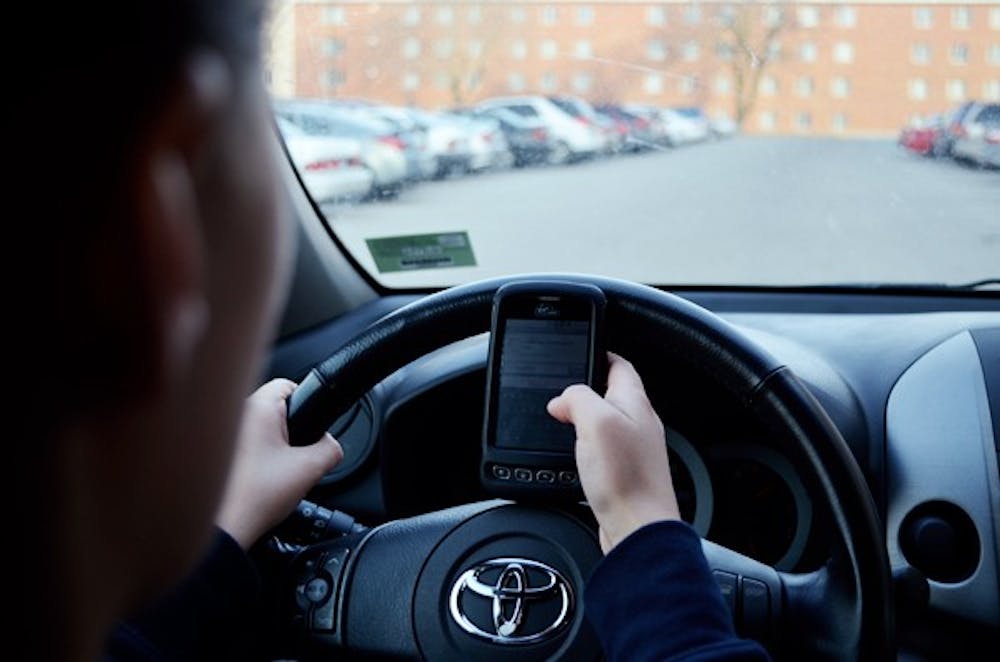About 23 percent of auto collisions involve cell phones study says

Is simply sending or reading a quick message to a friend worth risking your car ending up in smoke?
According to textinganddrivingsafety.com, at least 23 percent of auto collisions in the U.S. in 2011 involved cell phones, which equals up to 1.3 million crashes.
Though some students feel sending a quick text message is harmless, others disagree and feel as if that text message can end life too soon.
“You have to look down and text, and your attention isn’t on the road anymore,” Saginaw freshman Destinie Reid said. “Anything can happen. It only takes two seconds for a car accident to occur, (and) that’s about the time you look at your phone and try to text something and you already in a car accident.”
Reid said she has texted while driving before and it almost caused her to hit a pedestrian while leaving her high school.
“I almost hit my security guard at school,” Reid said. “He was in the car. We both were in the car and nobody else was in the parking lot. I was the last person leaving the parking lot. I look up, I’m about to hit him and he swerved out the way and I swerved.”
Reid said the officer was fine, but very angry. Since then, Reid has decided to never text while driving again.
“Even if it is an empty parking lot. I'm not doing this again,” Reid said. “… I don’t even like to be in cars with people who are texting and driving. The point is I couldn’t do it anymore, I had to stop. That was my first time and when that happened, I felt ‘Nope, this (isn't) for me.’ I can’t do it.”
This is nothing new for CMU Police Officer Timothy Prout. Prout said he doesn’t see students often texting while driving, but that doesn’t mean they don’t do it.
“I don’t see it that often when I’m driving in a marked patrol car or when I’m driving in my personal truck where I sit up higher,” Prout said. “… (Though) it’s very common for me to watch somebody driving along texting on their phone because I’m not in a police car, so they’re not concerned about doing it with me beside them.”
Prout said he understands students will continue to text and drive regardless of what the law says, even when there is a $100 fine for a first offense of texting while driving and a $200 for subsequent offenses.
“I think people will continue to do it until there’s some type of technology that actually prevents them from doing it in the vehicles,” Prout said. "I think they will just go ahead and continue because the chances of them getting caught are relatively low.”
According to mlive.com, one of the latest studies from the University of Michigan cites that “more than 25 percent of teens say they read or send at least one text message every time they drive, but only 1 percent of parents think their teenage children do so.”
“I don’t like to talk on the phone and drive, so they know that I won’t do that,” Saginaw freshman Kimberly Johnson said.
It is also believed that children will mimic their parents’ driving behavior.
“I do my texting at red lights, because that’s what I see my parents do," Johnson said. "And even though my parents do talk on the phone and drive, I don’t do it. It’s just because I don’t like it. If people want to do that, they’re going to do what they want to do.”



